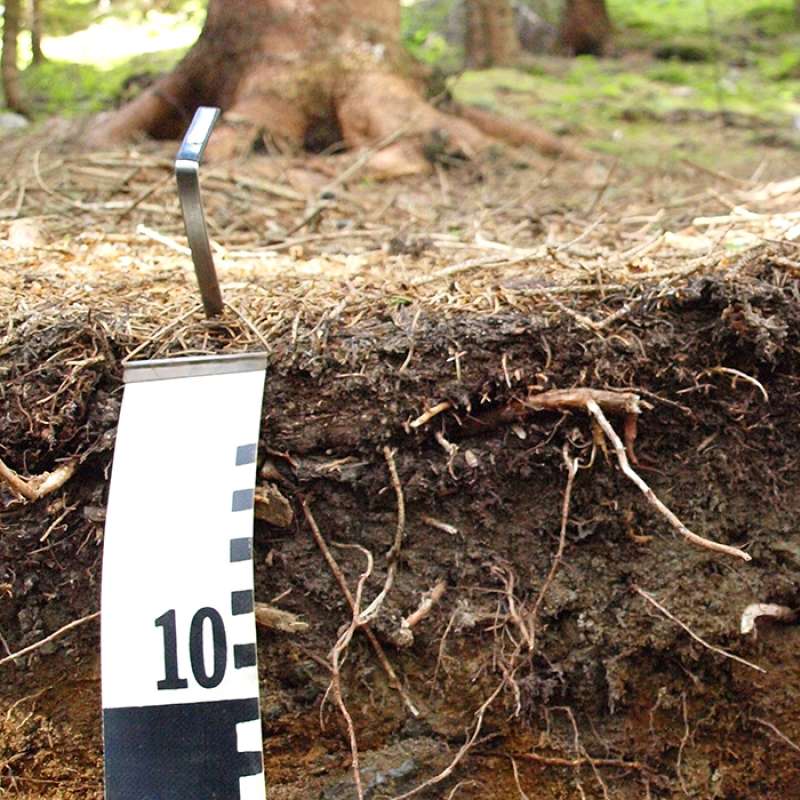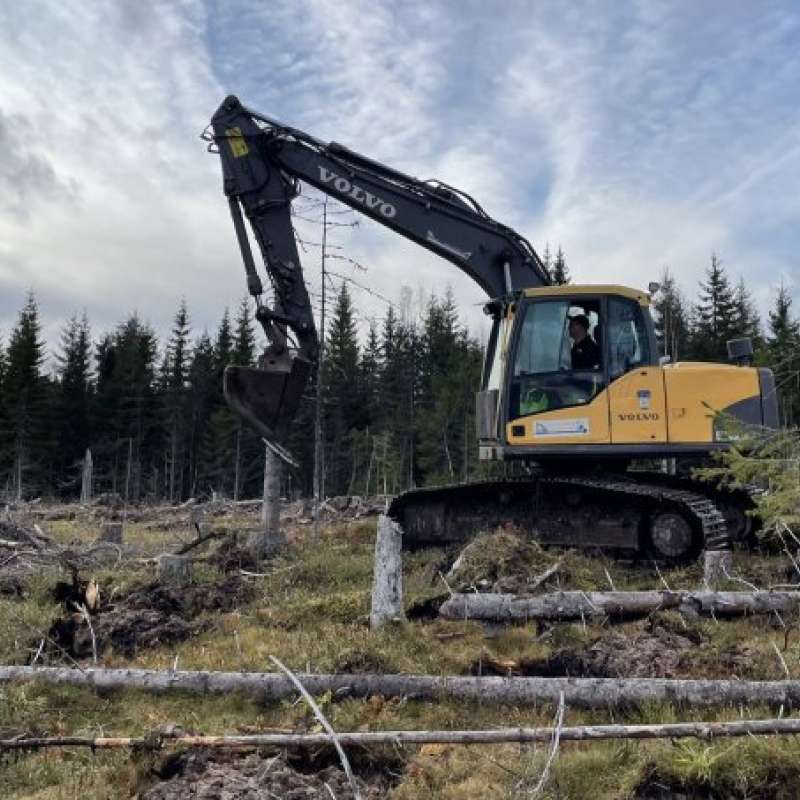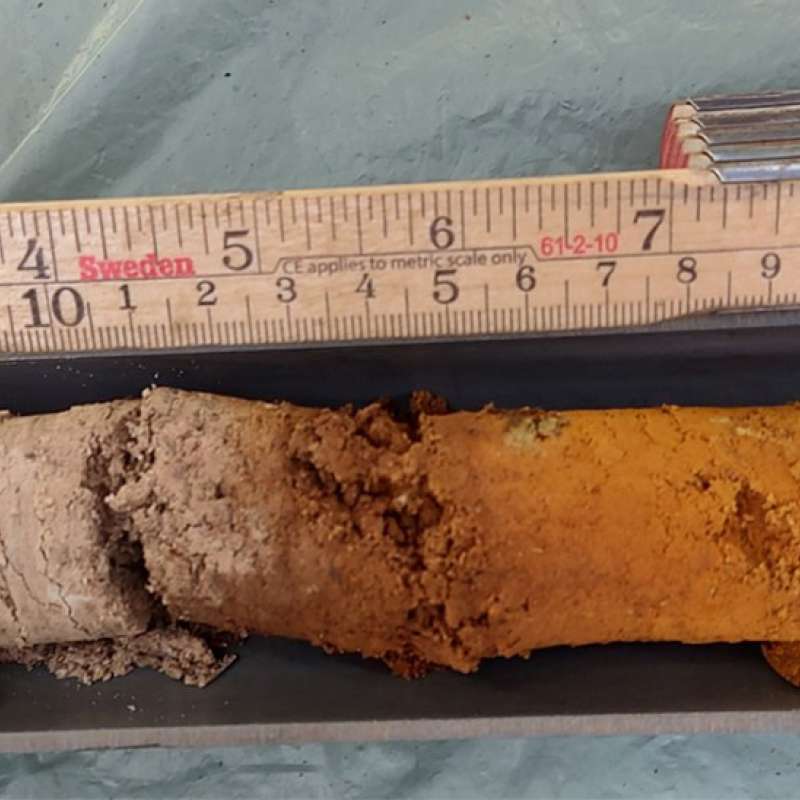O. Janne Kjønaas
Seniorforsker
Sammendrag
Det er ikke registrert sammendrag
Forfattere
Carl-Fredrik Johannesson H. Ilvesniemi O. Janne Kjønaas K.S. Larsen A. Lehtonen Jenni Nordén D. Paré Hanna Marika Silvennoinen J. Stendahl I. Stupak L. Vesterdal Lise DalsgaardSammendrag
Nordic and Canadian forests store substantial amounts of carbon (C) and are largely managed in a silvicultural system with clear-cut harvest. Previous meta-analyses of harvesting effects on soil C have shown short- to long-term declines after harvest, but effects of clear-cutting on boreal and northern temperate forest soil C stocks remain unresolved. We harmonized National Forest Soil Inventory (NFSI) data from Sweden, Denmark, Finland, Norway and Canada to examine soil C stocks up to 53 years following clear-cut harvest using a space-for-time approach. We analyzed forest floor and mineral soil C stocks in coniferous and deciduous/mixed forests. Coniferous forest floor C stocks decreased for ∼30 years after clear-cutting: when at its lowest stock level, Picea and Pinus forest floor C stocks had decreased by 23 % and 14 % relative to initial stock levels, respectively. Picea forest floor C stocks then remained close to its lowest levels until 53 years after clear-cutting, while for Pinus-dominated forests they increased again and recovered to the pre-harvest level 48 years after clear-cutting. No C stock changes were detected in the 0–10 cm or 10–20 cm mineral soil layers, while a small increase in 55–65 cm mineral soil was detected in Podzol soils. Data was too limited to detect statistical signals of clear-cutting for deciduous/mixed forests. Our results shows that clear-cut harvest has substantial and long-lasting effects on northern temperate and boreal forest soil C storage, and that combining data from several NFSIs can help elucidate forest management effects on soil C storage. Soil organic carbonForest harvestClear-cuttingBorealTemperateNational forest inventoryNational forest soil inventory
Sammendrag
Litter decomposition is coupled to carbon (C) sequestration through C release to the atmosphere, C transformation and nutrient release to the soil. We investigated if clear-cutting has long-term effects on this vital ecological process and consequently on C dynamics in boreal forests using twelve pairs of previously clear-cut and near-natural forests. Three litterbag experiments were conducted using (I) standardised spruce and bilberry litter, (II) melanised and non-melanised fungal necromass and (III) rooibos and green tea. We found weak and inconsistent effects of harvesting history, that did not depend on litter quality or mesofauna exclusion. Litter quality was more important in explaining net mass remaining for fungal necromass than for aboveground plant litter. Mesofauna exclusion had only marginal effects on initial litter decomposition. Results obtained with the highly standardised Tea Bag Index were not readily comparable to those of the plant litter or fungal necromass and we therefore question its use in this regional context. Further, we show that net mass or C remaining in the litterbags do not correlate consistently with in situ soil respiration. This finding is discussed in relation to previous measurements of soil C fluxes from the same system. In conclusion, we suggest that potential disturbances to the physical environment or the capacity of the decomposer community to facilitate litter decomposition are no longer clearly evident when clear-cut stands approach maturity.

Divisjon for skog og utmark
EcoForest - Forestry effects on biodiversity, carbon stocks and ecological processes in mature boreal forests
Formålet med prosjektet er å fremskaffe kunnskap knyttet til langsiktige effekter av skogskjøtsel på biodiversitet, karbonlagre og økologiske prosesser.

Divisjon for skog og utmark
Markberedning og karbon
«Markberedning og karbon» er et samarbeidsprosjekt mellom næringsaktørene i Innlandet, Statsforvalteren i Innlandet, Skogkurs og forskningsinstitusjonene i skogbruket i Norge, med Glommen Mjøsen Skog som prosjekteier. Prosjektet har som mål å dokumentere markberedningens effekt på karbonbalansen i skogøkosystemet gjennom å måle lager av karbon, samt utslipp og opptak, i markberedt skog og kontrollflater.

Divisjon for skog og utmark
Carbon sequestration in Norwegian spruce forest soils (CONSEQUENCE)
Norway has pledged to reduce its greenhouse gas emissions, and one of the strategies and ultimate goal is to increase the short and long-term sequestration of organic carbon in forest soil to enhance the carbon stock of soil organic carbon in forests. Altering forest management strategies, such as extending rotation periods and clear-cutting methods, may change soil carbon storage, accumulation and loss.
